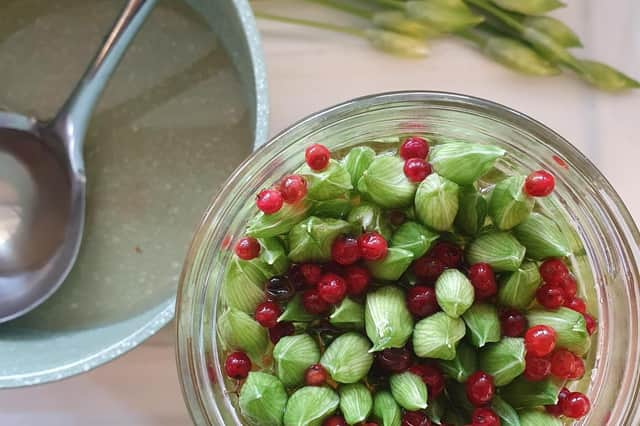CARMELA HAYES COLUMN: Wild garlic can give you a genuine gift of spring


This wonderful season brings blue skies, crisp air and, suddenly, our gardens begin to awaken after a dormant and turbulent winter.
A favourite herb and leaf to go foraging for is most definitely wild garlic, the gift of spring. The wild garlic leaves are verdant, long, wide and infused with a gentle yet punchy flavour of garlic.
Advertisement
Hide AdAdvertisement
Hide AdThe buds are equally delicious, especially when pickled and preserved. As normal I will infuse pasta dough with the large feather-shaped leaves; make some delicious tagliatelle; make the most incredibly strong cheddar cheese and wild garlic leaf scones; and pickle the flower buds (before flowering) for a little aromatic pickled indulgence, while using the blossom flowers to dress salads, vegetable fritters and frittatas.
My list could go on as wild garlic is certainly stronger in aroma in its naked, uncooked form. I am a huge fan.
For the short period of time that wild garlic is available you should try to forage a little responsibly when you have the chance. That said it can be a challenge to find, but do persist.
The aroma alone would most certainly lead you to the wild garlic lottery in a local quiet woodland. Remember though that the wild garlic season stretches from March–mid-May depending on location, weather and climate.
Advertisement
Hide AdAdvertisement
Hide AdWild garlic pesto lends itself so well to many dishes: spread liberally over warm, toasted ciabatta; spooned through a finished risotto; spread over a little fish; or run through some al dente pasta. So many wonderful options.
Make the pesto and freeze in ice-cube trays for an easy, instant-access sauce or dressing. I have chosen to not use any garlic cloves in this pesto, but you obviously can add one if you prefer a very heavy garlic flavour. I will, however, urge you to add a little garlic at a time.
50g pine nuts
1 small garlic clove (optional)
40g basil
60g wild garlic leaves
50g Parmigiano Reggiano, grated
150ml olive oil
Salt as required
I like to use a pestle and mortar, however you could also use a small food processor if preferred. Making the pesto in a pestle and mortar gives you more control to determine the texture of the finished result. I like to have a varied texture as opposed to a smooth, untextured paste.
Pound the pine nuts; I choose to use untoasted pine-nuts, but you can toast them in a dry frying pan for two minutes. Don’t take your attention away from the pine nuts because they tend to burn very quickly, resulting in a bitter pesto, Add the optional garlic, create a paste.
Advertisement
Hide AdAdvertisement
Hide AdAdd the basil and garlic leaves along with a glug of the olive oil. Pound the leaves for 60 seconds. Sprinkle in the Parmigiano Reggiano and a pinch of salt. Slowly add the olive oil until you have a velvety, dropping consistency. Taste and check for seasoning as required.
If you fancy having a go at a simple bud pickle, try this little beauty!
100g water
100g cider vinegar
100g granulated sugar
1 tsp pink peppercorns
Wild garlic buds, with 10cm stems
Add the water, cider vinegar and granulated sugar into a small saucepan and warm until the sugar has dissolved, continue to simmer for a further two minutes. Remove the pan from the heat and add the pink peppercorns.
Cover the buds once the pickling mixture has cooled. Place into sterilised jars and store for one to two months before tucking in.